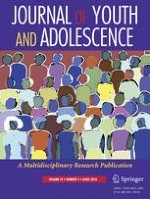12-05-2017 | Empirical Research
Physiological Self-Regulation Buffers the Relationship between Impulsivity and Externalizing Behaviors among Nonclinical Adolescents
Gepubliceerd in: Journal of Youth and Adolescence | Uitgave 4/2018
Log in om toegang te krijgenAbstract
Trait impulsivity is a risk factor for rule breaking and aggressive (externalizing) behaviors among nonclinical youth. Buffers of trait-based risk are of practical interest to preventing externalizing behaviors. One such buffer may be the capacity and efforts of a child to self-regulate their physiology. Youth who possess baseline physiological self-regulatory capacities are more likely to maintain adaptive engagement with their environment and may be less prone to impulsively rule break or be aggressive. Similarly, youth who are able to use self-regulatory skills to calm their physiology in times of stress may be less likely to externalize distress. This study examined self-regulatory capacity and efforts as a moderator of the relationship between trait impulsivity and externalizing behaviors, cross-sectionally and prospectively. We hypothesized that the effect of trait impulsivity on externalizing behaviors would depend on the presence of baseline self-regulatory capacity and/or self-regulatory efforts during stress. Participants were 134 nonclinical adolescents (Mage = 12.59, SD = 1.20 51.9% female, 71% Caucasian). Trait impulsivity was measured using a parental report questionnaire. Physiological self-regulatory capacity and efforts were measured through collection of electrocardiogram data during a resting baseline and a stressful, unsolvable anagram task, respectively. Physiological self-regulation was quantified by calculating respiratory sinus arrhythmia scores across baseline and stress tasks. Respiratory sinus arrhythmia is the change in heart rate across the breathing cycle, and is hypothesized to index physiological self-regulation capacity and efforts under specific conditions. The results indicated that physiological self-regulation capacity, but not efforts, moderated the effect of trait impulsivity on externalizing behaviors prospectively. Stronger physiological self-regulatory capacity buffered the effect of greater trait impulsivity. Implications of these findings among typically developing youth are discussed.
